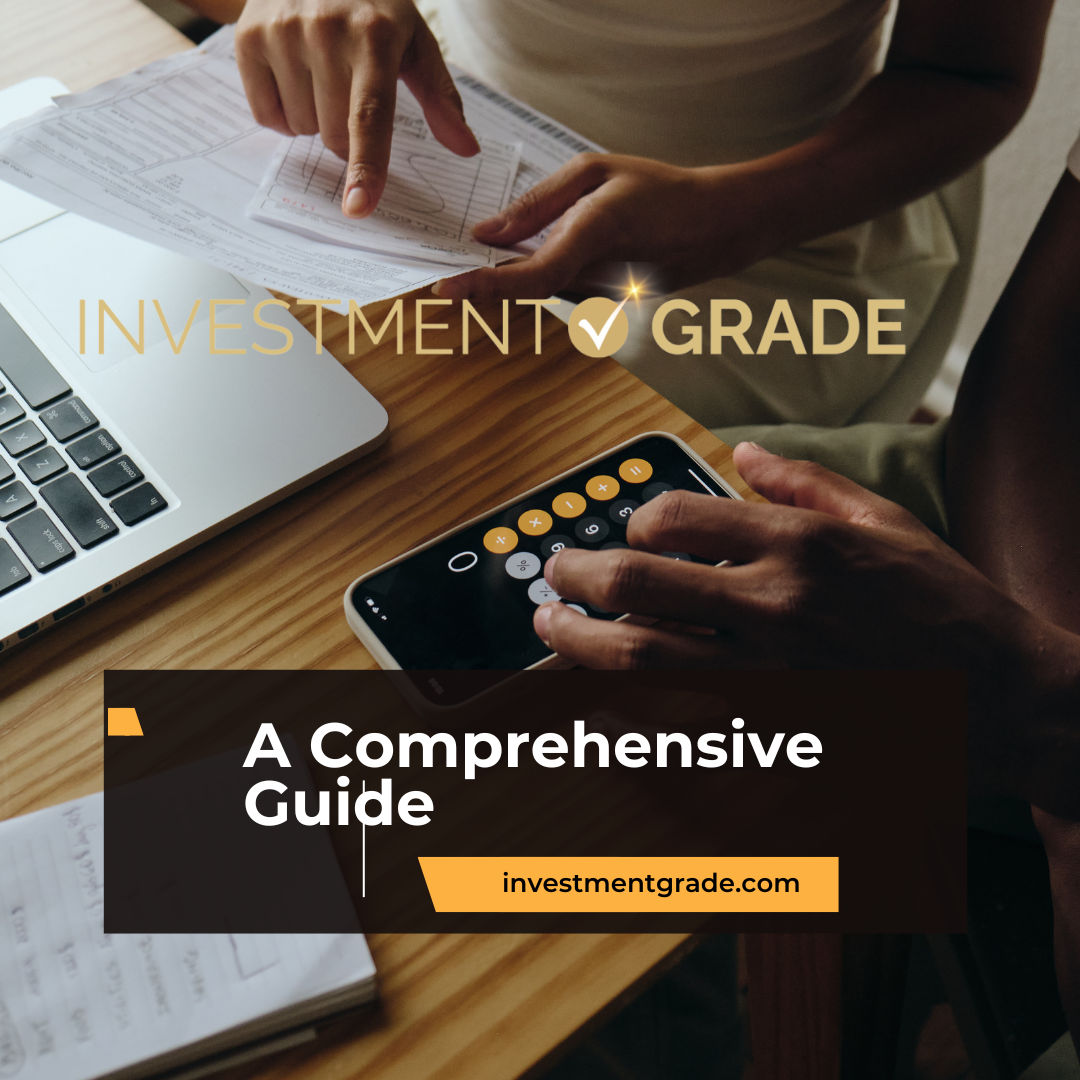Investment Grade
Real Estate
Real Estate: Grading the Investment for Long-Term Success
Real estate is a cornerstone of wealth creation, offering investors opportunities to build stable, cash-flowing portfolios while achieving significant appreciation over time. In the Real Estate category, we explore how “investment grade” principles apply across the diverse spectrum of real estate assets, from commercial properties rated by Class (A, B, C) and NNN leases to the rapidly evolving field of residential investment. Whether you’re investing in long-term rentals, short-term vacation properties, or Build-to-Rent (BTR) communities, understanding how grading these assets enhances decision-making is critical to maximizing returns and minimizing risk.
Grading Commercial Real Estate Investments
Commercial real estate (CRE) remains the backbone of institutional and individual investment strategies, with assets often graded by Class (A, B, C) to reflect their quality, location, and market positioning. Class A properties, often newer buildings in prime locations, boast high-quality tenants and superior amenities, making them the gold standard of “investment grade” commercial assets. Class B and C properties, while offering lower entry costs, are graded by their potential for value-add opportunities, such as renovations or operational improvements.
NNN (Triple Net) lease properties take grading a step further, tying the asset’s stability to the creditworthiness of its tenant. Investment grade NNN properties leased to corporations like Amazon, Walgreens, or FedEx provide predictable income streams with minimal management responsibilities. These assets represent the pinnacle of low-risk, long-term investment opportunities in the CRE space. By understanding how grading criteria—from tenant credit ratings to location analytics—affect an asset’s overall profile, investors can better align their portfolio strategies with their financial goals.
The Growing Sophistication of Residential Property Grading
Residential real estate has become increasingly sophisticated in how investment opportunities are assessed and graded. No longer limited to a binary “good or bad” decision, today’s investment grade residential properties are evaluated based on metrics that go beyond simple location or price. For long-term rentals, factors like tenant quality, operating expenses, and neighborhood growth trends play a significant role in determining whether a property meets the standards of a stable and lucrative investment.
Short-term rentals (STRs), such as vacation homes or Airbnb properties, are now being graded based on their revenue potential, seasonality, and management efficiency. Investment grade STRs often feature prime locations, unique amenities, and reliable year-round occupancy rates, allowing them to stand out in competitive markets. With platforms like Investment Grade leading the way, investors can better evaluate short-term rental opportunities with a level of precision that was previously reserved for large-scale commercial deals.
Build-to-Rent (BTR) communities represent a hybrid of the commercial and residential markets, combining the operational efficiency of multifamily assets with the individuality of single-family homes. These purpose-built communities are increasingly viewed as investment grade due to their appeal to tenants seeking quality rental options without the burdens of ownership. Grading these developments involves assessing not just tenant demand but also scalability, management practices, and long-term sustainability.
How Investment Grade Enhances Real Estate Grading
At Investment Grade, we help investors apply rigorous grading standards to every real estate opportunity, ensuring that decisions are backed by data and aligned with long-term objectives. For commercial properties, we provide in-depth assessments of tenant creditworthiness, lease terms, and market conditions. For residential investments, we evaluate rental income potential, property appreciation trends, and emerging opportunities in the short-term and Build-to-Rent sectors.
Our grading methodology ties all these elements together, offering investors a comprehensive view of an asset’s potential. By combining traditional metrics like cap rates and net operating income (NOI) with modern tools like revenue projection models and tenant analytics, we bring a level of sophistication to real estate investing that empowers clients to confidently grow their portfolios.
Elevating Real Estate Investment Standards
The real estate market is vast and varied, but grading each opportunity with investment grade principles ensures that your portfolio remains resilient and profitable across economic cycles. Whether you’re focused on acquiring a Class A office building, diversifying into short-term rentals, or exploring the scalability of Build-to-Rent communities, this category offers the insights and strategies needed to make informed, high-quality investments.
Through our commitment to grading the investment, Investment Grade helps you navigate the complexities of real estate with clarity and precision. By tying asset quality, financial metrics, and market trends into a cohesive framework, we empower investors to make smarter decisions and achieve lasting success in both commercial and residential markets.

-

From Defensive to Cyclical: Uncovering the Secrets Behind Today’s Investment Grade Corporate Bonds
15th December 2025 | by the Investment Grade Team
In an era of shifting economic winds and rapid market evolution, the investment-grade corporate bond market stands out as a bastion of stability and opportunity. As investors navigate a world where interest rates, inflation, and various macroeconomic factors continuously redefine risk, corporate bonds offer a compelling blend of income and quality that can underpin even…
-

Investment Grade Auto NNN: A Guide to Acquiring Automotive Tenants
15th December 2025 | by the Investment Grade Team
The automotive sector has evolved into a vibrant niche within the triple-net (NNN) lease market. Auto parts retailers, service centers, dealerships, and rental companies all play a significant role in delivering essential services, from routine maintenance to complex repairs. These businesses, often operating from standalone buildings or pad sites with long-term leases, are especially attractive…
-

Investment Grade Dollar General: An In-Depth Analysis for Passive Income Investors
15th December 2025 | by the Investment Grade Team
Contributor: Eli Schultz Dollar General has become a cornerstone for many passive real estate investors, especially those seeking NNN (triple-net) leases backed by an investment grade tenant. With thousands of small-format stores across the country, this discount retail giant offers steady cash flows, minimal landlord obligations, and a resilient business model. This analysis dives deep…
-

Navigating the Future: 2025 Commercial Real Estate Outlook
15th December 2025 | by the Investment Grade Team
The commercial real estate market is on the cusp of transformation. Deloitte’s 2025 Commercial Real Estate Outlook presents a cautiously optimistic vision for the future of the sector—a vision supported by robust survey data, macroeconomic trends, and the rapid pace of technological adoption. In a market often defined by cycles of boom and bust, industry…
-

Investing in the Future: Top Investment Grade Sectors Driving Real Estate Growth in 2025
15th December 2025 | by the Investment Grade Team
Below is a look at the investment-grade alternative sectors poised to define real estate markets in 2025. In today’s ever-changing economic landscape, investors are seeking sectors that not only offer attractive yields but also deliver stability, resilience, and long-term value. As we navigate a world of shifting demographics, technological innovation, and heightened environmental awareness, certain…
-

Investment Grade CRE Outlook: 2025 Analysis of Commercial Real Estate Sectors
15th December 2025 | by the Investment Grade Team
As we enter 2025, the U.S. commercial real estate (CRE) market continues to present a compelling yet nuanced landscape. Following years of significant volatility, the market has begun to stabilize, driven by a confluence of macroeconomic factors, evolving capital market conditions, and sector-specific dynamics. The CRE market remains a vital component of the U.S. economy,…
-

Unlocking Value with Investment Grade Sale Leasebacks: A Strategic Guide for Business Owners
15th December 2025 | by the Investment Grade Team
The Strategic Power of Investment Grade Sale Leasebacks in Commercial Real Estate Sale-leasebacks have emerged as a sophisticated financial solution for business owners who own real estate across a wide range of asset classes. By converting real estate assets into liquid capital while retaining operational control, this strategy offers businesses in healthcare, retail, industrial, and…
Investment Grade | Investment Grade Real Estate | Investment Grade Capital | Investment Grade Ratings



